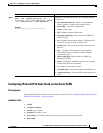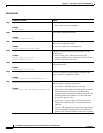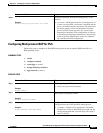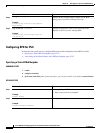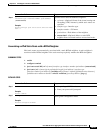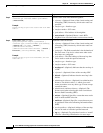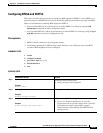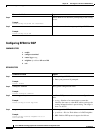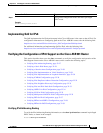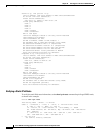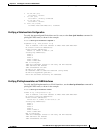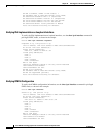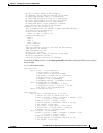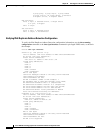
32-25
Cisco ASR 901 Series Aggregation Services Router Software Configuration Guide
OL-23826-09
Chapter 32 IPv6 Support on the Cisco ASR 901 Router
How to Configure IPv6 Support on the Cisco ASR 901 Router
Configuring BFDv6 and OSPFv3
This section describes the procedures for configuring BFD support for OSPFv3, so that OSPFv3 is a
registered protocol with BFD and will receive forwarding path detection failure messages from BFD.
There are two methods for enabling BFD support for OSPFv3:
• You can enable BFD for all of the interfaces for which OSPFv3 is routing by using the bfd
all-interfaces command in router configuration mode.
• You can enable BFD for a subset of the interfaces for which OSPFv3 is routing by using the ipv6
ospf bfd command in interface configuration mode.
Prerequisites
• OSPFv3 must be running on all participating routers.
• The baseline parameters for BFD sessions on the interfaces over which you want to run BFD
sessions to BFD neighbors must be configured.
SUMMARY STEPS
1. enable
2. configure terminal
3. ipv6 router ospf process-id
4. bfd all-interfaces
5. exit
DETAILED STEPS
Command or Action Purpose
Step 1
enable
Example:
Router> enable
Enables privileged EXEC mode.
• Enter your password if prompted.
Step 2
configure terminal
Example:
Router# configure terminal
Enters global configuration mode.
Step 3
ipv6 router ospf
process-id
Example:
Router(config)# ipv6 router ospf 2
Configures an OSPFv3 routing process.
• process-id—Internal identification. It is locally
assigned and can be a positive integer from 1 to 65535.
The number used here is the number assigned
administratively when enabling the OSPF for IPv6
routing process.



